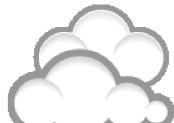Painted faces
Imagine a 3 by 3 by 3 cube made of 9 small cubes. Each face of the large cube is painted a different colour. How many small cubes will have two painted faces? Where are they?
Problem
This activity is all about
imagining, as you might do when you listen to a story or
poem.
There is no need to write or draw
anything
BUT
talking about it could be
good
SO
find a friend to do this
with!
Imagine a 3 by 3 by 3 cube made from 27 smaller cubes.
Perhaps it's here - but behind this cloud!
Image

So, remove the cloud in your mind
and there it is!
It's hanging in the air in front of you so you can just see one face of it and that face has been painted red
The right-hand side face has been
painted yellow
The left-hand side face has been
painted blue
The top face has been painted
white
The underneath bottom face has
been painted black
The back face has been painted
green.
1. How many small cubes have just two of their faces painted?
2. Where are they?
3. What are the two colours on each of those small cubes that have two faces painted?
Now you could try the same things with a larger starting cube, that is 4 by 4 by 4, and answer the same three questions.
If you'd like to take these ideas a bit further, have a look at Painted Cube .
Getting Started
You could try concentrating on just one face to begin
with. Which small cubes on this face will have two of
their faces painted?
So where else will there be small cubes with two faces painted?
So where else will there be small cubes with two faces painted?
Student Solutions
Brian from Riverdale thought about the 3 by 3 by 3 cube carefully. He said:
There are 12 cubes that have only 2 faces painted. They are the middle cube along each edge.They are red and yellow, red and blue, red and white, red and black, black and blue, black and yellow, black and green, green and white, green and blue, green and yellow, yellow and white, white and blue.
Rebecca from St John the Baptist School, Findon, explained how she went about the problem:
I found the answer by first drawing the cube on a piece of paper, then making it real in my head.I then turned round the cube in my head and counted the squares that had two colours.
Well done, Rebecca! When you're picturing something in your head, as you were, we can also say you are "visualising". The Maths Group from Stourport Primary saw it in a slightly different, but equally good, way. They wrote:
Curt noticed that there are 4 of these little cubes on each of the 3 layers of the big cube.Charlotte and Molly B. described where the 12 cubes are by imagining the big cube in 3 layers.
On the top and bottom layers the 4 cubes are on the outside of the face in between the 4 vertices making a cross shape pattern.
On the middle layer it is the 4 cubes on the outside corners.
Very well done. Has anybody investigated a 4 by 4 by 4 cube? Or even bigger cubes?
Let us know if you do.
Teachers' Resources
Why do this problem?
This might be a good starting exercise, if, as a teacher, you've never done any similar imaginative thinking (visualising) in Maths. You may find it best to introduce these kinds of ideas in small groups to start with, before having the whole class embark on such an adventure.Possible approach
It can be very hard to prevent yourself from saying too much when the pupils are explaining what is going on in their minds. Questions such as "Tell me about what you are imagining" and "Tell me about how you're counting" are probably useful "open" questions to use. Try to avoid halting a pupil's thinking by saying "Yes I know exactly what you mean" too soon! A natural progression from the problem is to look at the other "kinds" of small cubes which make up the larger cube, for example those with just one face painted, three faces painted, four faces painted etc. and of course no faces painted.When going on to the larger 4 by 4 by 4 cube, it would be worth asking pupils to predict the numbers before thinking too much.
